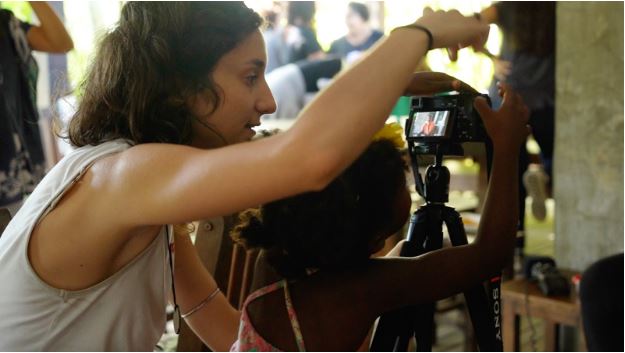As the IFP experience comes to a close, our small team of 10 has spent the last few weeks in Rio filming, photographing, and making as many connections as possible. While each of us is engaged in individual research and media work, our central project is an interactive trans-media website called “Pockets,” exploring the city of Rio through a lens of human rights. Our specific focus is an exploration of various sites across the city that preserve public access to the right of memory, beauty, knowledge and education. In documenting some of the spaces and places of Rio, we have only just started to get a true sense of the richness and texture of the city.
Now that we are beginning to feel more comfortable navigating the city and language, it is nearly time to leave! But my sense is that these investigations are perhaps just a start, an opening to the conversation, and an act of listening and engagement that we hope to continue beyond these two months.
Here is a look at the past week of filming and where our cameras have taken us:
On Saturday we travel an hour west of the city center to the Museu Casa do Pontal. This is our third day of filming artist and educator Robnei Bonifácio, who leads free painting and drawing workshops for the children in his neighborhood. Today a small group of kids has come to the museum for a special field trip.
On Tuesday, Carmen, Emily and I head to Santa Teresa’s Retrato Espaco Cultural, an event space and art studio, to conduct interviews as a part of the Mulheres in Rio project. We speak with photographers Nana Moraes and Simone Rodrigues about their respective work and engagement in human rights issues through art.
On Thursday I met with Hanna and Natasha who are both conducting research at the Museu do Indio. The museum features multimedia exhibits highlighting Brazil’s indigenous peoples, and an expansive archive of objects, photographs, and sounds. We filmed interviews in the feather archive and learned more about the history of the museum and its work.
On Friday morning Hanna and I made a trip down to Valongo Wharf, a UNESCO Heritage Site, and the arrival point for nearly one million slaves from West and Central Africa. We stopped by the Instituto de Pesquisa e Memória Pretos Novos, a small museum situated on top of a cemetery. We met with museum administrator, Rafaelle, for an interview about the space and history of the museum.
During the afternoon I visited Projeto Morrinho, a social and cultural art project started over 20 years ago by two brothers in Pereira da Silva. What began as a simple game has since turned into a sprawling art installation; a miniature model of the city and its favelas, constructed entirely of bricks and found materials. We received a warm welcome from the founder, Cirlan, who has worked closely with IFP students in the past. Today I photographed and filmed the inspiring scene of Projeto Morrinho – it’s a perfect end to the week of city explorations.

